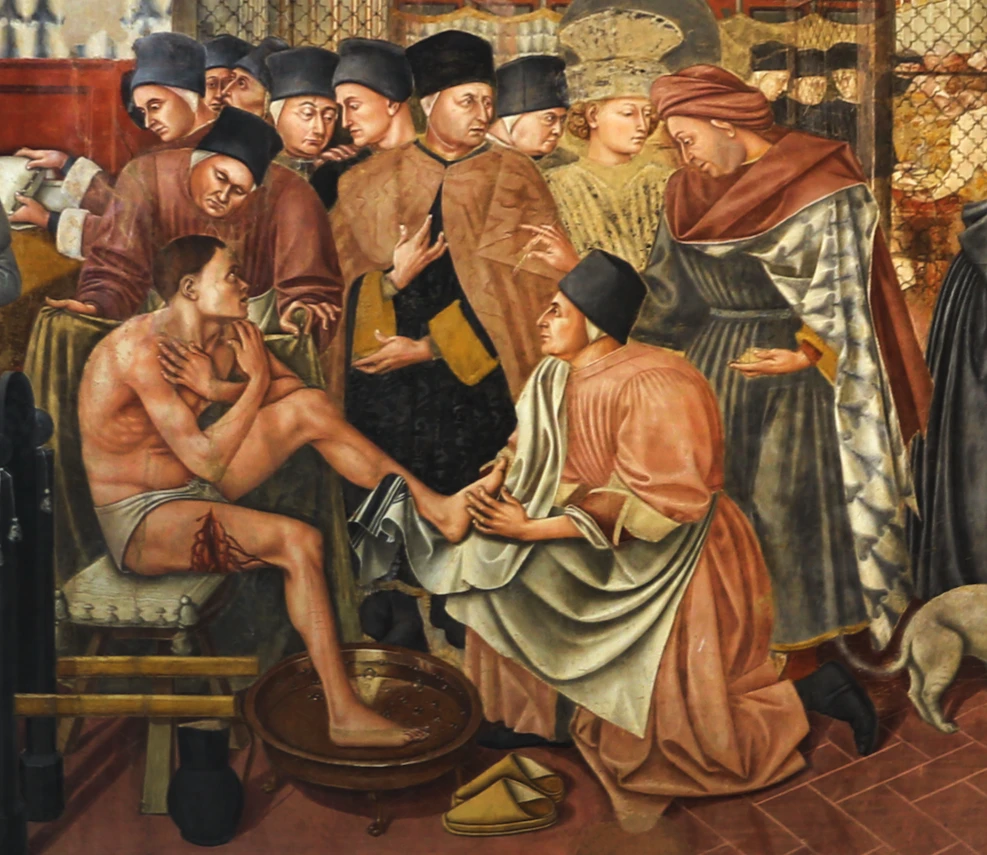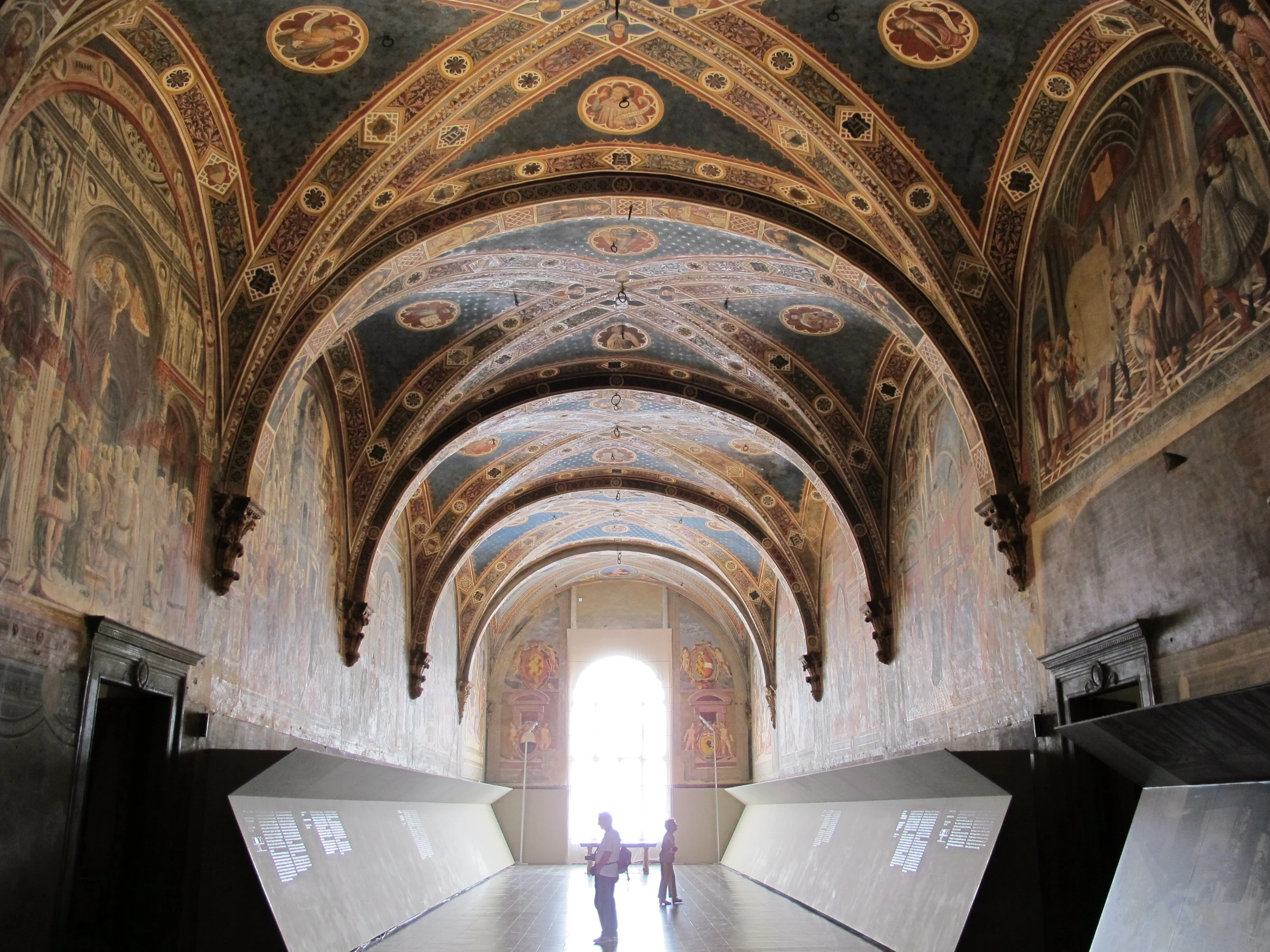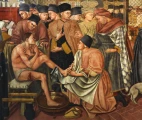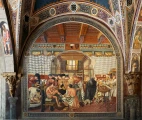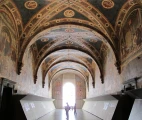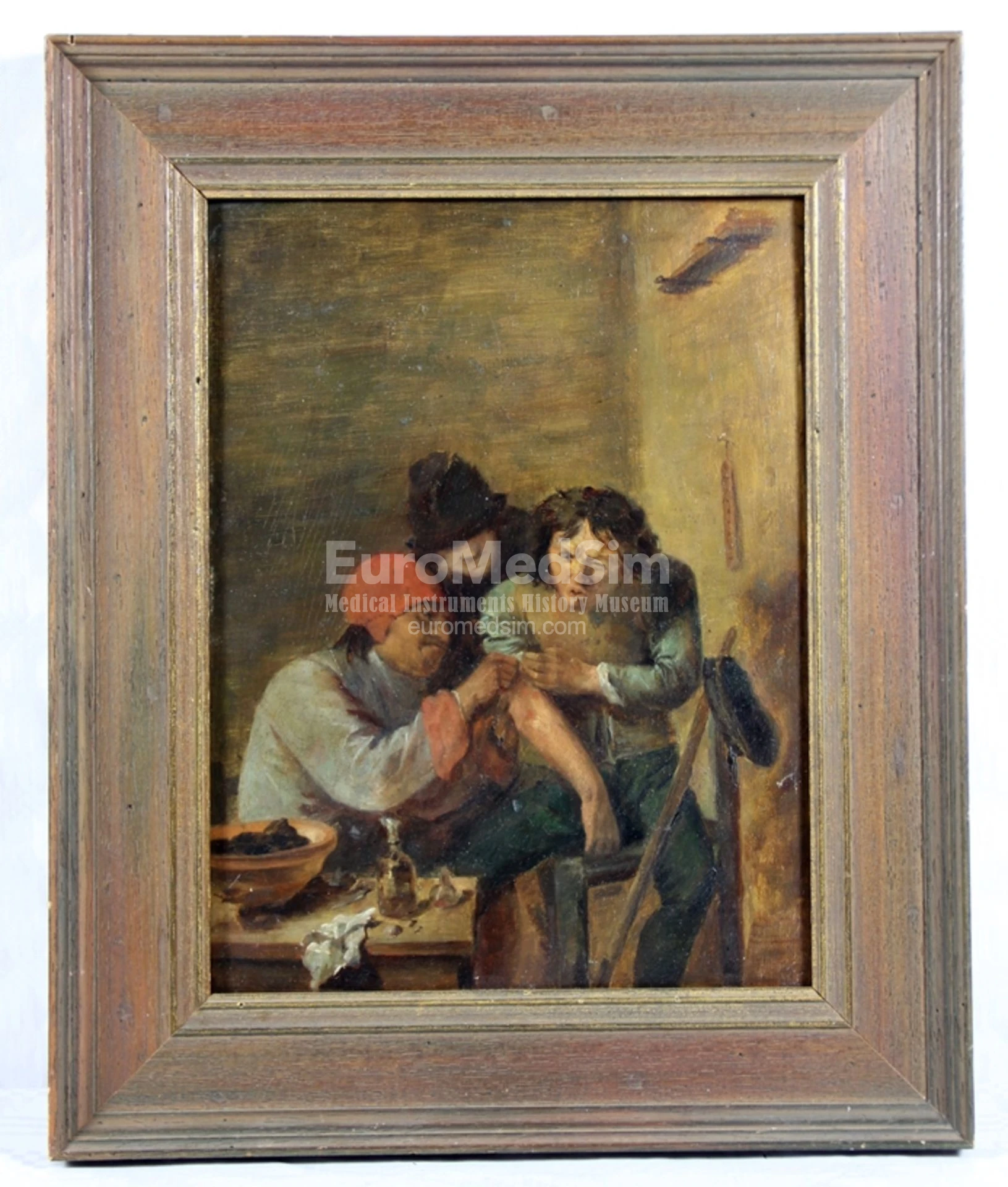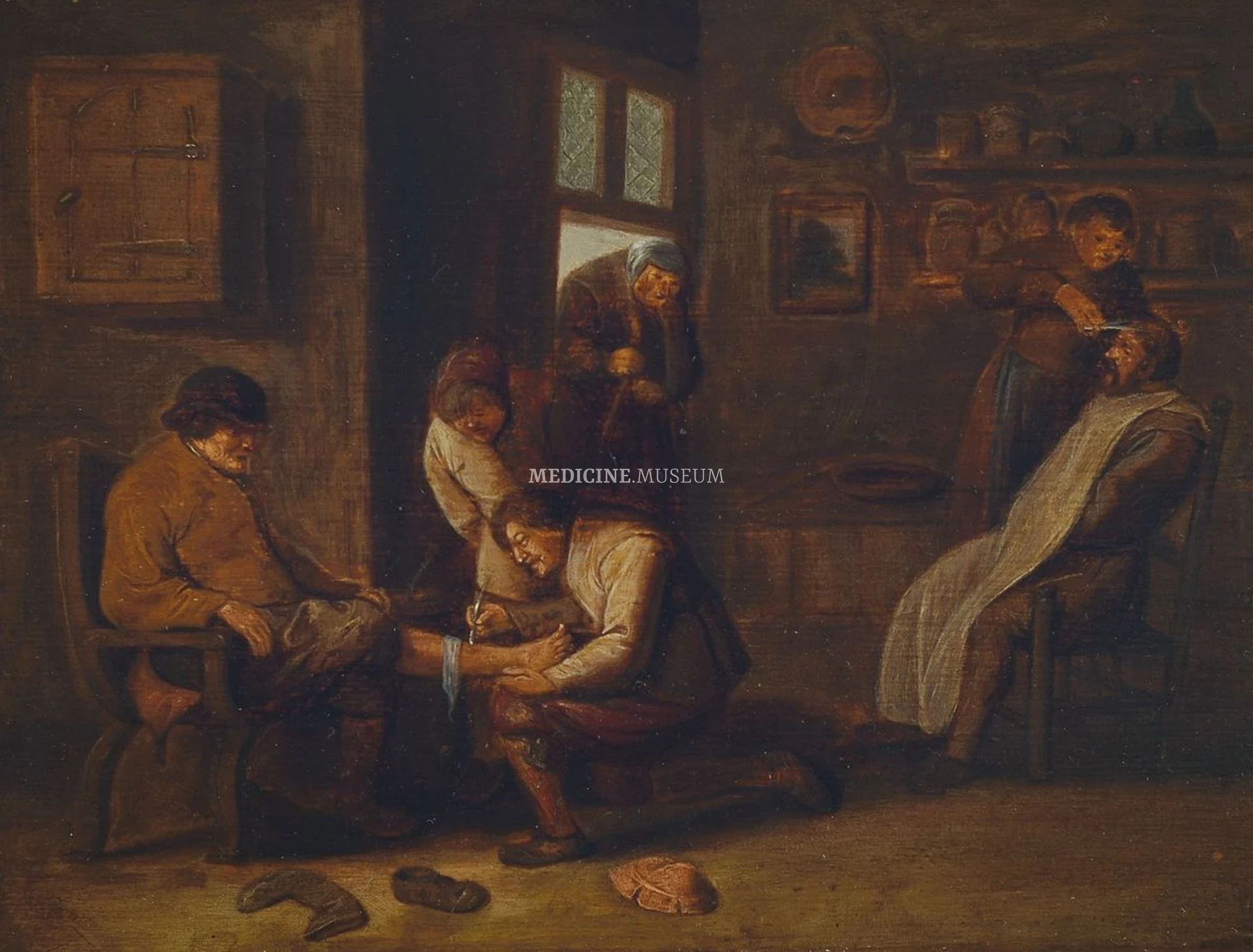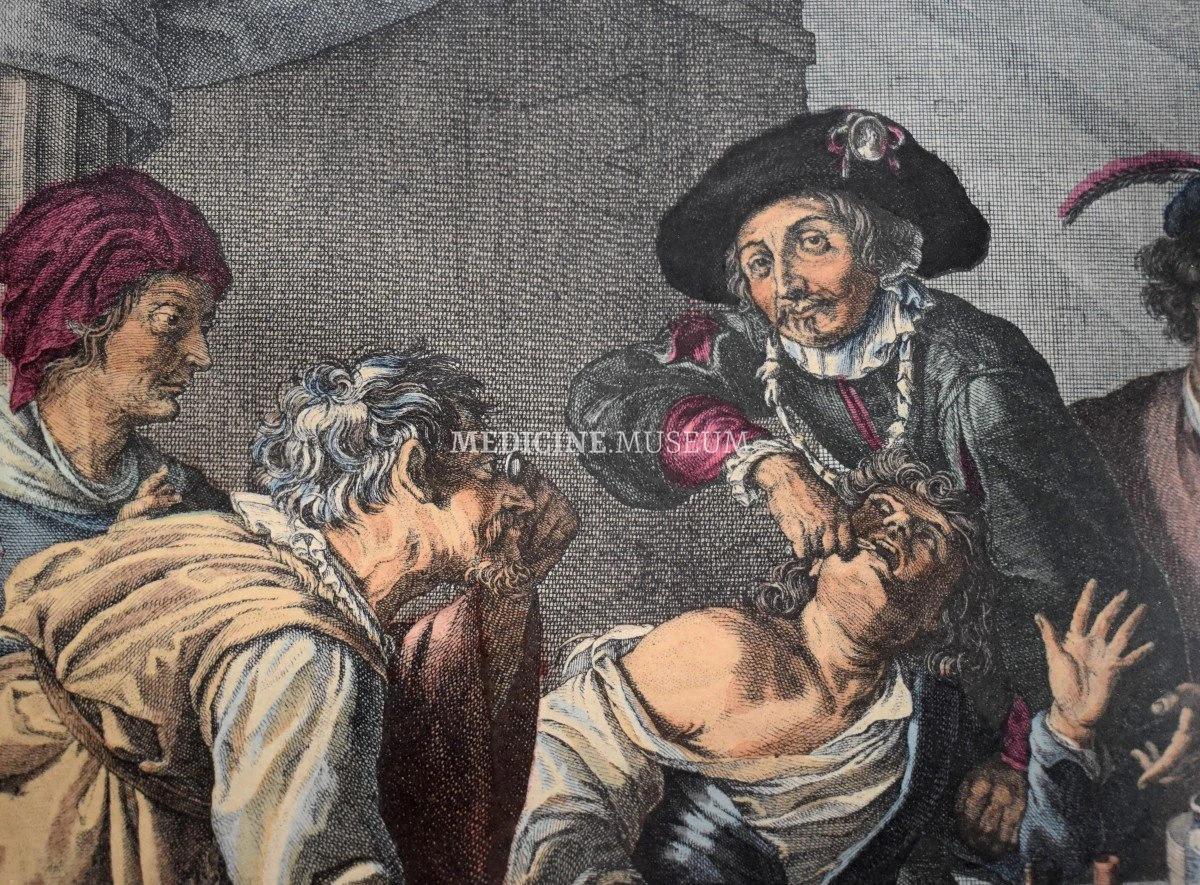The Care of the Sick – Governo e cura degli infermi
Governo e cura degli infermi – The Care of the Sick or The Care and Governance of the Infirm is undoubtedly one of the most famous and oldest depictions of the hospital activities in the world. The fresco among several others in the Hall was painted by the artist from Siena, Domenico di Bartolo (ca. 1400- ca. 1447).
The Hospital Santa Maria della Scala
The hospital Ospedale di Santa Maria della Scala was named after the Cathedral situated at the same square was one of the first in Medieval Italy. Initially it served to the pilligrims on the Via Francigena (Franciscana), an ancient road and pilgrimage route running from the cathedral city of Canterbury in England, through France and Switzerland, to Rome and then to Apulia where there were ports of embarkation for the Holy Land.
The Hospital Santa Maria della Scala, one of Europe’s oldest hospitals, was established in the 9th century and played a critical role in medieval society, providing medical care, shelter for pilgrims, and support for the poor and orphans.
The fresco Governo e cura degli infermi is the most famous of the cycle of painted arches in the great hall, Pellegrinaio – the room to host male Pilgrims. The architecture is composed of round-arched cross vaults, resting on corbels with original Corinthian stump capitals, of obvious transmontane influence, as, moreover, is the longitudinal structure of the hall. Frescoes, mostly from the 1440s created by the local artist Domenico di Bartolo, decorate the niches of the arches that support the ceiling of the Pilgrims' Hall. The paintings were commissioned in the 15th century as part of an effort to document and celebrate the hospital's charitable work and the city’s commitment to social welfare.
The Care of the Sick
Studying this work will not only reproduce some of the hospital's rooms, but also give an insight into its daily life, which from the early fourteenth century was governed by strict statutes.
The fresco showcases a spacious, well-organized hospital ward filled with patients in various stages of treatment and care. The room is depicted with high, arched ceilings that hint at the grandeur and importance of the institution. The depiction gives a sense of an orderly and structured environment, reinforcing the idea of an effective and advanced healthcare system for the time.
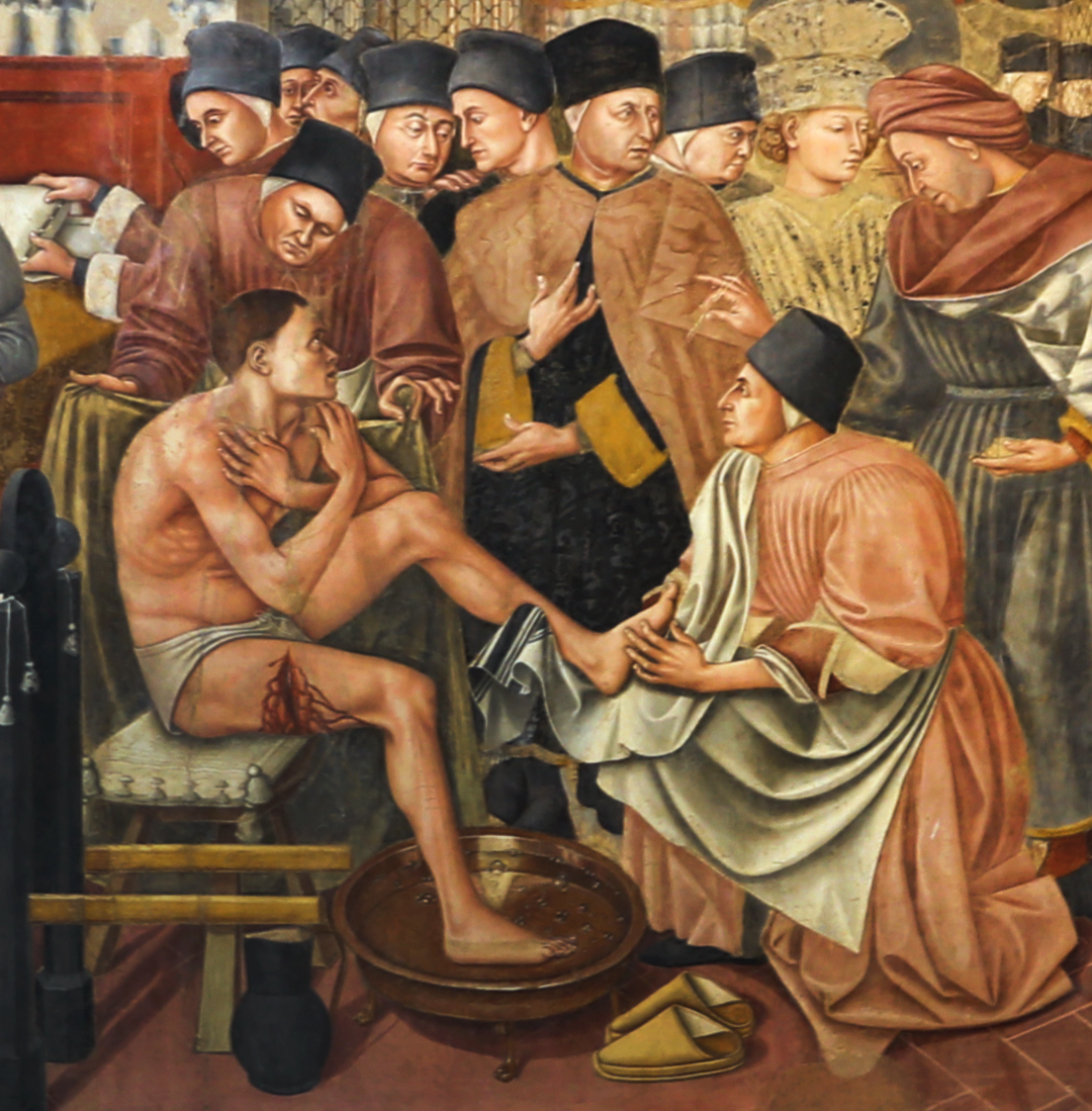
One care-giver washes the wounded man's legs, another covers him with a sheet. The rector, surrounded by assistants, discusses with the surgeon the possible treatment of the patient
The fresco shows several genre scenes of helping the wounded and sicks. In the foreground, a half-naked patient with a deep cut wound in his thigh sits on a chair. He is suffering from the cold and a servant carefully tries to cover him with a cloak. In front of him, on one knee, a lay carer (oblatus) wearing a red garment and round black hat is washing the patient's legs in a basin, wiping them with a white sheet, thus preparing the wounded for the surgical manipulation. Behind them stands a group of lay brothers (oblati) in red clothes and traditional Italian woolen black round hats, worn over white coif caps. They surround the main figure, presumably the Rector of the hospital, in black robes and a richly embroidered beige mantle. He keeps a close eye on the smooth running of the actions taking place in the room. The Rector is talking to a surgeon in a red mazzocchio, a headgear composed of a circle, larger than the circumference of the head and formed of cotton padding and covered with cloth. The surgeon holds an instrument in his right hand and is ready to start wound care.
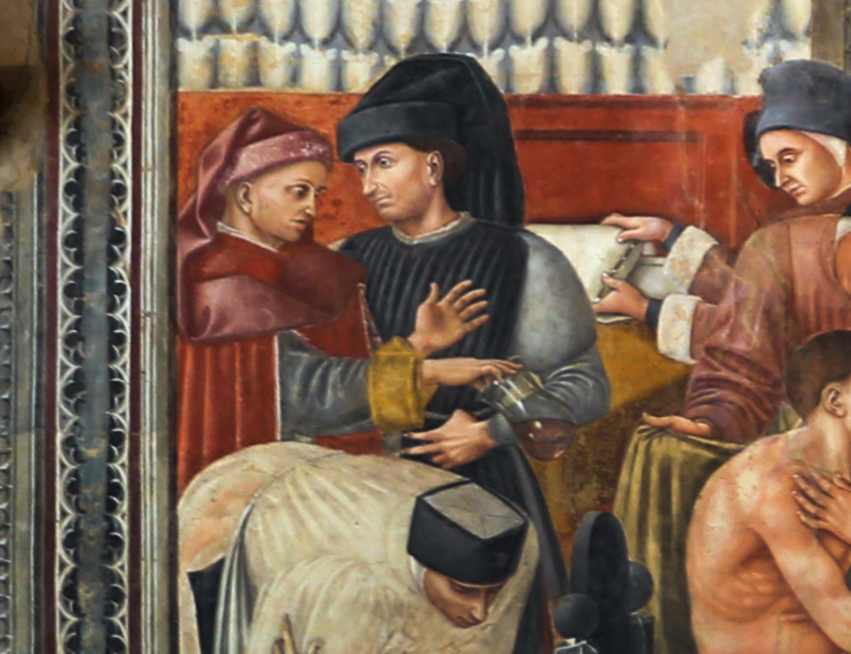
Two doctors review a urine mantula while discussing a possible diagnosis.
To their left we can see physical medicine dedicated to the non-surgical treatment of the internal diseases. On the far left, a ward servant in a white smock and rectangular black hat is helping a very thin, pale-skinned patient to make himself comfortable, if at all possible in a stretcher like the one he's lying on. In a heartfelt cry for help, the patient clutches the arm of his temporary benefactor. Behind them, two physicians are holding a consilium on the results of a uroscopy, a diagnosis based on the examination of urine held in a special glass vessel, matula.
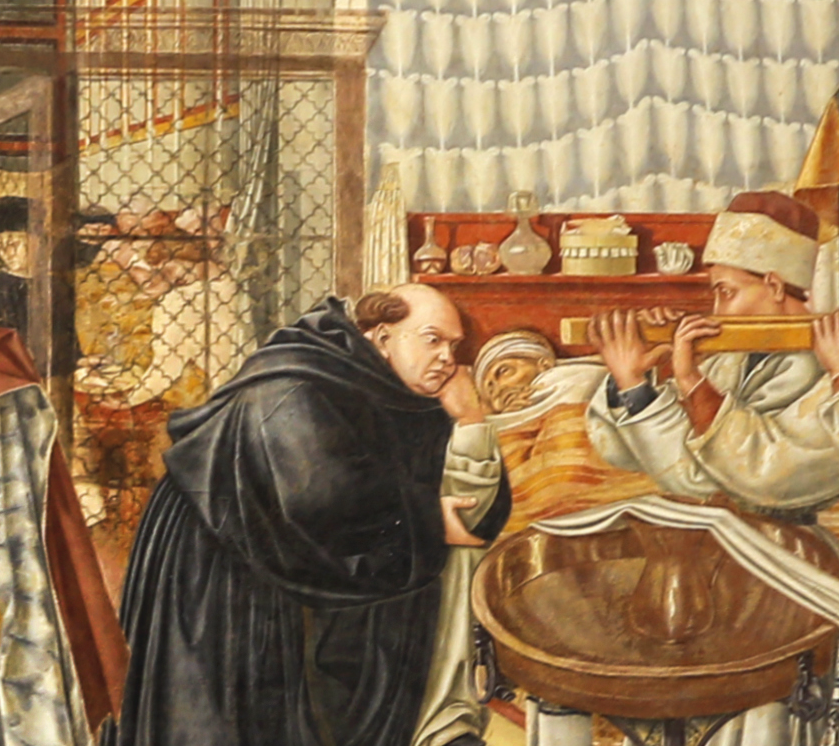
A cleric administers communion to a dying oldman
To the right, a spiritual activity is represented by a ruddy cleric who is confessing a dying oldman with his head wrapped round, lying on a bed. On the shelf at the headboard of the bed are various glasswares, vials and boxes of medicines. Two orderlies in white robes entering the room from the right side, carrying a stretcher on their shoulders with a patient who is not seen yet.
On the first line of the fresco one can see a pair of large, comfortable, hygienic slippers, carefully lined up in a row, prepared by the servant for the wounded man. Here, they can reminds us once again, on a tiny scale, of the vocation of the institution of peace and hospitation born of the will of the city of Siena.
The entire scene is imbued with a sense of communal care and religious charity, as hospitals at the time were closely tied to the Church. The fresco might include subtle religious symbols or gestures that highlight the idea that caring for the sick was seen as a godly and virtuous act.
Thus, this fresco gives us an idea of the multidisciplinary hospital of that time, providing surgical and therapeutic treatment, patient care and spiritual assistance to the sick and poor.
